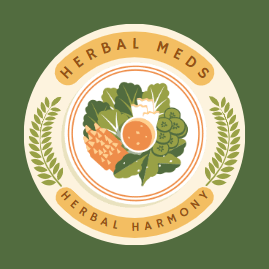Medical Marijuana has emerged as a significant topic in healthcare, law, and society over the past few decades. As more research uncovers its potential benefits, and as legal landscapes evolve, understanding medical marijuana’s uses, effects, and challenges has become essential.
What Is Medical Marijuana?
Medical marijuana refers to the use of the cannabis plant or its chemical components, primarily cannabinoids like THC (tetrahydrocannabinol) and CBD (cannabidiol), to treat medical conditions. Unlike recreational marijuana, which is used for its psychoactive effects, medical marijuana is prescribed to alleviate symptoms or improve the quality of life for patients suffering from various illnesses.
Cannabinoids interact with the body’s endocannabinoid system, which plays a role in regulating mood, pain sensation, appetite, and immune function. This interaction is why marijuana can influence symptoms such as chronic pain, nausea, and inflammation.
Medical Conditions Treated with Medical Marijuana
Medical marijuana is commonly used to manage symptoms associated with a range of conditions, including:
Chronic Pain: One of the most prevalent uses, medical marijuana can help patients who suffer from long-term pain due to arthritis, fibromyalgia, or nerve damage.
Cancer: It can alleviate nausea and vomiting caused by chemotherapy, improve appetite in cancer patients, and help with pain management.
Multiple Sclerosis (MS): Studies suggest that cannabinoids can reduce muscle spasms and stiffness in people with MS.
Epilepsy: Particularly in treatment-resistant forms of epilepsy, such as Dravet syndrome, CBD has been shown to reduce the frequency and severity of seizures.
Glaucoma: Medical marijuana can reduce intraocular pressure in the eye, which may help slow the progression of glaucoma.
Mental Health Disorders: Some patients with anxiety, PTSD (post-traumatic stress disorder), and depression find symptom relief with medical marijuana, although research in this area is still developing.
How Medical Marijuana Is Used
Medical marijuana can be administered in various forms:
Inhalation: Smoking or vaporizing cannabis allows cannabinoids to enter the bloodstream quickly, providing fast symptom relief.
Oral: Edibles, capsules, and tinctures offer longer-lasting effects, though they take longer to start working.
Topical: Creams and balms applied to the skin are used primarily for localized pain and inflammation without psychoactive effects.
Oils and Extracts: Concentrated forms of cannabinoids can be precisely dosed and used for severe symptoms.
The choice of method depends on the condition being treated, patient preference, and physician guidance.
The Science Behind Medical Marijuana
The medical benefits of marijuana largely come from its cannabinoids. THC is the main psychoactive compound responsible for the “high,” but it also has therapeutic effects like pain relief and appetite stimulation. CBD, on the other hand, is non-psychoactive and is prized for its anti-inflammatory, anti-anxiety, and seizure-reducing properties.
Research into cannabinoids is ongoing, with studies investigating how these compounds can affect inflammation, neurodegeneration, cancer cell growth, and mental health disorders. Although much of the current evidence is promising, medical marijuana is not a cure-all, and its effectiveness varies from person to person.
Legal Status and Regulation
The legal status of medical marijuana varies widely across the world and within countries. Some places have fully legalized it for medical use, others only allow limited use for specific conditions, and some maintain strict prohibitions.
In regions where medical marijuana is legal, regulations typically govern:
Qualifying medical conditions
Physician certification and patient registration
Licensed dispensaries and product quality controls
Restrictions on dosage, possession limits, and forms of consumption
These regulations aim to ensure patient safety while preventing misuse.
Benefits and Risks
Benefits:
Provides symptom relief for patients with limited options
Can reduce reliance on opioids and other pharmaceuticals with higher risk profiles
Offers an alternative treatment for conditions resistant to conventional therapies
May improve quality of life through pain relief, appetite stimulation, and mood enhancement
Risks:
Psychoactive effects from THC can impair cognition and coordination
Potential for dependency or misuse, though less addictive than some other substances
Side effects such as dizziness, dry mouth, fatigue, or anxiety in some users
Possible interactions with other medications
Lack of standardized dosing and variability in product potency
Because of these factors, medical marijuana should be used under professional medical supervision.
Challenges and Future Directions
Despite its growing acceptance, medical marijuana faces several challenges:
Research Limitations: Federal restrictions and stigma have limited large-scale clinical trials, slowing the development of standardized dosing guidelines and deeper understanding of risks.
Product Variability: Different strains and products can vary widely in cannabinoid content, making consistency difficult.
Social Stigma: Cultural attitudes and misconceptions about marijuana still affect patients’ willingness to try it and physicians’ readiness to recommend it.
Legal Conflicts: Even in places where medical marijuana is legal, federal or international laws may conflict, creating uncertainty for patients and providers.
Looking ahead, advances in research may lead to more refined cannabinoid-based medications with targeted therapeutic effects and fewer side effects. Personalized medicine approaches could help identify which patients benefit most from specific compounds or formulations.
Conclusion
Medical marijuana represents a promising yet complex tool in modern medicine. It offers potential relief for many patients suffering from chronic and debilitating conditions but must be approached carefully, balancing benefits against risks. As science progresses and legal frameworks adapt, medical marijuana could become a mainstream therapeutic option, contributing to more compassionate and effective patient care.
